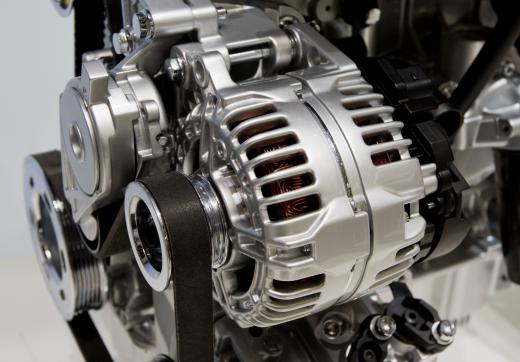A pulley remover is a tool used to remove non-taper fit pulleys from the shafts of electric motors, gasoline engines, or driven components such as alternators and pumps. Pulleys of this type are of a very secure press fit on the shafts that drive them and are also generally located close to the casing of the motor or component, making them difficult to remove. A pulley remover is designed to hook in behind or onto the pulley and pull it off of the shaft using the mechanical advantage of a screw or hydraulic mechanism. This powerful yet non-aggressive action ensures that the pulley is removed without cracking or distorting it. It also ensures that key-ways and motor covers are not damaged during the removal process.
Non-taper fit drive pulleys are typically sized to sit very tightly on the drive shaft. Unlike taper fit pulleys that lock onto the shaft by means of a tapered, half-shell bushing, they rely on friction and a key to keep them from spinning on the shaft during operation. This not only ensures a secure fit, but also makes them difficult to remove, often requiring considerable force to get them off when the motor or they, themselves, require maintenance or replacement. The fact that the pulley is often very close to the end shields of the motor or component does not make the task any easier. The pulley remover is a specially designed tool meant to make pulley removal relatively easy and non-destructive.

The pulley remover functions in one of two basic ways. The first makes use of a set of between two and three arms that pivot at one end on a threaded sleeve or nut and feature claws on their opposite ends. A strong bolt or screw is turned into the nut with its end up against the face of the drive shaft, while the claws on the individual arms are then placed behind the pulley and the bolt turned until they are tight. At this point, the bolt cannot advance through the nut as it is tight up against the shaft, meaning that the only movement possible is the nut moving up the bolt threads. As the clawed arms hooked behind the pulley are attached to the nut, they move with it, and, as the bolt is turned, pull the pulley smoothly and evenly off of the shaft.
The second pulley remover type is designed to remove the ridged pulleys typically found on turbochargers and superchargers. These exert force on the pulley in the same fashion, but feature a two-part, half-shell clamp that fits tightly onto the pulley in the same way that the drive belt does. Larger pulley removers may also feature a hydraulic ram that replaces the bolt as a motive agent. Pulleys should always be removed with a pulley remover and not pried or knocked off, as this is sure to break or bend either the pulley or the component's end covers.
